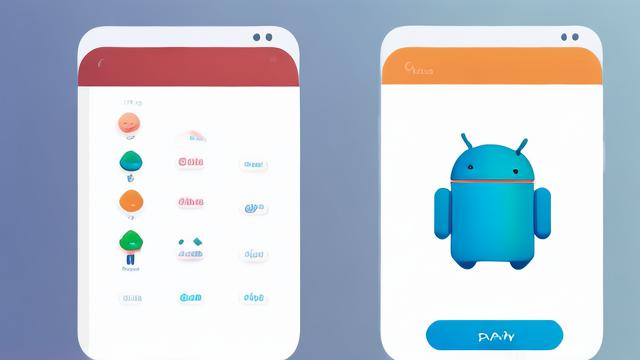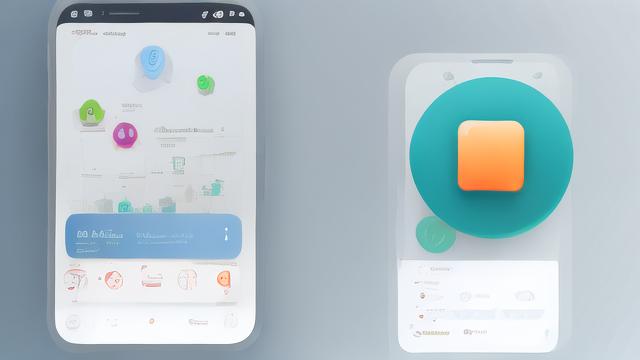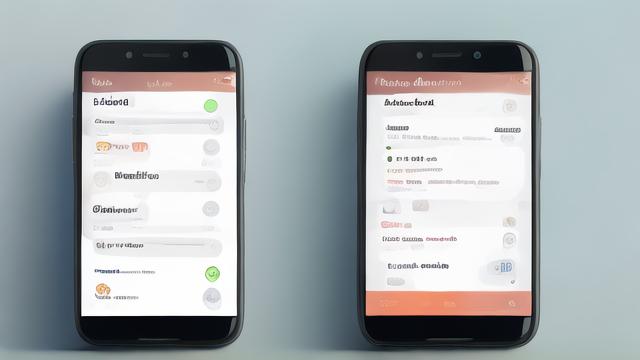Android实现社交应用中评论与回复功能

在Android平台上开发一个具备评论和回复功能的社交应用程序,需要结合UI设计、数据存储、网络通信等多方面的技术,本文将详细阐述如何实现这一功能,包括界面设计、数据模型、业务逻辑以及网络请求等关键部分。
一、项目
目标
创建一个能够发布评论,并针对特定评论进行回复的社交应用模块,用户可以通过该模块查看他人的评论,并对感兴趣的评论做出回应。
技术栈
编程语言:Java/Kotlin
数据库:Room(本地缓存)+ Firebase Firestore/Realtime Database(云端同步)
网络库:Retrofit或OkHttp
UI框架:Jetpack Compose或XML布局+View Binding

二、数据模型设计
首先定义两个实体类:Comment和Reply,每个评论可以有多个子回复,但子回复只能属于一个父级评论。
@Entity(tableName = "comments")
public class Comment {
@PrimaryKey(autoGenerate = true)
private int id;
private String userId;
private String postId; // 关联到某个帖子
private String content;
private long timestamp;
// getters and setters...
}
@Entity(tableName = "replies")
public class Reply {
@PrimaryKey(autoGenerate = true)
private int id;
private int commentId; // 关联到某条评论
private String userId;
private String content;
private long timestamp;
// getters and setters...
}三、数据库操作
使用Room持久化层来管理本地数据库的操作,为上述两个实体创建DAO接口,并提供相应的Repository类封装CRUD方法。
DAO接口示例
@Dao
public interface CommentDao {
@Insert
void insertComment(Comment comment);
@Query("SELECT * FROM comments WHERE postId = :postId ORDER BY timestamp DESC")
List<Comment> getCommentsByPostId(String postId);
}
@Dao
public interface ReplyDao {
@Insert
void insertReply(Reply reply);
@Query("SELECT * FROM replies WHERE commentId = :commentId ORDER BY timestamp DESC")
List<Reply> getRepliesByCommentId(int commentId);
}Repository类示例
public class CommentRepository {
private CommentDao commentDao;
private LiveData<List<Comment>> allComments;
public CommentRepository(Application application) {
CommentRoomDatabase db = CommentRoomDatabase.getDatabase(application);
commentDao = db.commentDao();
allComments = commentDao.getAllComments();
}
public LiveData<List<Comment>> getAllComments() {
return allComments;
}
public void insert(Comment comment) {
new InsertCommentAsyncTask(commentDao).execute(comment);
}
private static class InsertCommentAsyncTask extends AsyncTask<Comment, Void, Void> {
private CommentDao commentDao;
InsertCommentAsyncTask(CommentDao commentDao) {
this.commentDao = commentDao;
}
@Override
protected Void doInBackground(Comment... comments) {
commentDao.insertComment(comments[0]);
return null;
}
}
}四、UI设计与交互逻辑
1. 主界面布局 (activity_main.xml)
<LinearLayout xmlns:android="http://schemas.android.com/apk/res/android"
android:layout_width="match_parent"
android:layout_height="match_parent"
android:orientation="vertical">
<RecyclerView
android:id="@+id/recyclerView"
android:layout_width="match_parent"
android:layout_height="wrap_content"/>
</LinearLayout>2. RecyclerView适配器 (CommentAdapter.java)

public class CommentAdapter extends RecyclerView.Adapter<CommentAdapter.CommentViewHolder> {
private List<Comment> comments;
private OnItemClickListener listener;
public interface OnItemClickListener {
void onReplyClick(int position);
}
public void setOnItemClickListener(OnItemClickListener listener) {
this.listener = listener;
}
public static class CommentViewHolder extends RecyclerView.ViewHolder {
public TextView commentTextView;
public ImageButton replyButton;
public CommentViewHolder(View itemView) {
super(itemView);
commentTextView = itemView.findViewById(R.id.textView);
replyButton = itemView.findViewById(R.id.replyButton);
}
}
@NonNull
@Override
public CommentViewHolder onCreateViewHolder(@NonNull ViewGroup parent, int viewType) {
View view = LayoutInflater.from(parent.getContext()).inflate(R.layout.item_comment, parent, false);
return new CommentViewHolder(view);
}
@Override
public void onBindViewHolder(@NonNull final CommentViewHolder holder, int position) {
final Comment comment = comments.get(position);
holder.commentTextView.setText(comment.getContent());
holder.replyButton.setOnClickListener(v -> {
if (listener != null) {
listener.onReplyClick(holder.getAdapterPosition());
}
});
}
@Override
public int getItemCount() {
return comments.size();
}
public void setComments(List<Comment> comments) {
this.comments = comments;
notifyDataSetChanged();
}
}3. 评论项布局 (item_comment.xml)
<LinearLayout xmlns:android="http://schemas.android.com/apk/res/android"
android:layout_width="match_parent"
android:layout_height="wrap_content"
android:orientation="horizontal"
android:padding="8dp">
<TextView
android:id="@+id/textView"
android:layout_width="0dp"
android:layout_height="wrap_content"
android:layout_weight="1" />
<ImageButton
android:id="@+id/replyButton"
android:layout_width="wrap_content"
android:layout_height="wrap_content"
android:src="@drawable/ic_reply" />
</LinearLayout>五、业务逻辑实现
添加评论功能
当用户点击“发表”按钮时,获取输入框内容并调用Repository保存新评论。
public void addComment(String content) {
Comment comment = new Comment();
comment.setUserId("currentUserId"); // 替换为实际用户ID
comment.setPostId("postId"); // 替换为实际帖子ID
comment.setContent(content);
comment.setTimestamp(System.currentTimeMillis());
commentRepository.insert(comment);
}回复评论功能
当用户点击某条评论旁边的“回复”按钮时,弹出对话框让用户输入回复内容,然后调用Repository保存新回复。
public void replyToComment(int commentId, String replyContent) {
Reply reply = new Reply();
reply.setCommentId(commentId);
reply.setUserId("currentUserId"); // 替换为实际用户ID
reply.setContent(replyContent);
reply.setTimestamp(System.currentTimeMillis());
replyRepository.insert(reply);
}显示评论及回复列表
通过RecyclerView展示所有评论及其对应的回复,可以使用嵌套的RecyclerView或者ExpandableListView来实现这一点,这里以嵌套RecyclerView为例:
public void displayComments(String postId) {
commentRepository.getCommentsByPostId(postId).observe(this, new Observer<List<Comment>>() {
@Override
public void onChanged(@Nullable List<Comment> comments) {
for (Comment comment : comments) {
displayRepliesForComment(comment);
}
}
});
}
private void displayRepliesForComment(Comment comment) {
// 假设已经有一个方法可以获取某条评论的所有回复
List<Reply> replies = replyRepository.getRepliesByCommentId(comment.getId());
// 更新UI,例如添加到RecyclerView中...
}六、网络同步与离线支持
为了确保数据一致性,并且能够在没有网络连接的情况下也能正常使用应用,我们需要将本地数据库与云端数据库进行同步,这里以Firebase Firestore为例:
public class SyncManager {
private FirebaseFirestore db;
private CommentRepository commentRepository;
private ReplyRepository replyRepository;
public SyncManager(Application application) {
db = FirebaseFirestore.getInstance();
commentRepository = new CommentRepository(application);
replyRepository = new ReplyRepository(application);
}
public void syncComments() {
commentRepository.getAllComments().observe(new LifecycleOwner() { ... }, new Observer<List<Comment>>() {
@Override
public void onChanged(@Nullable List<Comment> comments) {
if (comments != null) {
for (Comment comment : comments) {
Map<String, Object> data = new HashMap<>();
data.put("userId", comment.getUserId());
data.put("postId", comment.getPostId());
data.put("content", comment.getContent());
data.put("timestamp", comment.getTimestamp());
db.collection("comments").add(data);
}
}
}
});
}
}还需要处理从云端下载数据并更新本地数据库的逻辑,这部分内容较为复杂,涉及到冲突解决、增量更新等多个方面,具体实现取决于项目需求和技术选型。
以上就是关于“Android实现社交应用中评论与回复功能”的问题,朋友们可以点击主页了解更多内容,希望可以够帮助大家!